Learn how East and West lingerie traditions shaped today’s global market. Deepwear helps fashion brands source, design, and produce lingerie with confidence.
Lingerie has always been more than fabric and lace. Across cultures, intimate apparel reflects evolving ideas of beauty, comfort, modesty, and identity. In the West, lingerie followed a path from corsets to bras to modern shapewear. In East Asia, unique traditions such as the dudou emphasized symbolism and artistry.
Today, lingerie is also a global business. China alone produces around 60% of the world’s bras, with towns like Gurao in Guangdong nicknamed “the Town of Bras.” At the same time, Western brands still influence global trends, while Asian designers revisit heritage styles for modern audiences.
At Deepwear, we follow these shifts closely. We can support lingerie sourcing for fashion brands that reflects both East and West, whether through design translation, materials research, or production guidance.
In this blog, we cover:
- How cultural lingerie traditions in East and West shaped today’s global lingerie market.
- The rise of China lingerie manufacturing powerhouse.
- Key differences in lingerie consumer trends Asia vs West.
- The role of cultural exchange in shaping lingerie design and production.
- How Deepwear lingerie consulting supports brands with sourcing, design translation, and production.
- The future of lingerie, from sustainable lingerie production and inclusivity to technology and craftsmanship.
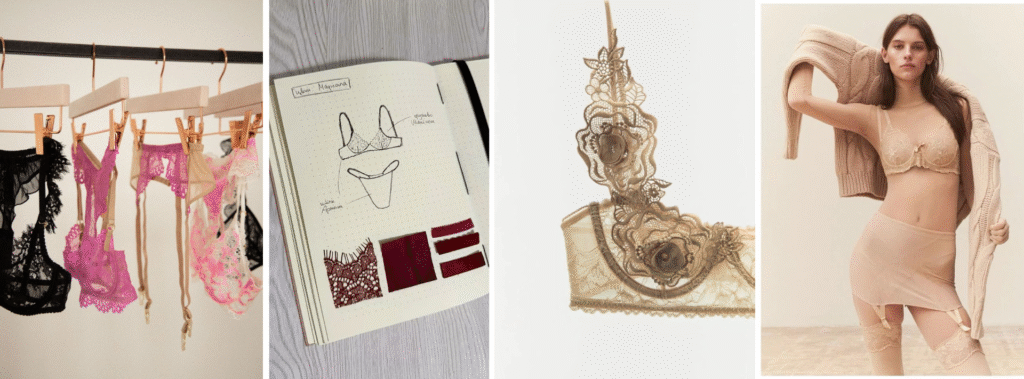
Two Histories, Two Foundations
In Europe, lingerie emerged as a tool of structure and control. The Renaissance corset narrowed the waist and accentuated the bust, while the 18th-century “stays” imposed rigid posture. By the mid-20th century, bullet bras and girdles projected exaggerated silhouettes that reflected ideals of femininity shaped by fashion and cinema.
China, however, followed a different trajectory. The dudou, a chest-and-belly covering often made of silk or cotton, combined modesty with symbolism. Its embroidery carried layered meanings—mandarin ducks for fidelity, lotus blossoms for purity, and peonies for prosperity. Unlike Western lingerie, which aimed to sculpt the body, the dudou was closer to a cultural canvas, blending protection, beauty, and spiritual belief.
These contrasting origins show lingerie as both a functional garment and a marker of cultural identity.
Contrasting Styles and Meanings
Western lingerie moved steadily toward sensuality and body enhancement. Waist-cinching corsets, garters, and bras emphasized structure, while lace and sheer fabrics heightened allure. In the 1960s and 70s, second-wave feminism challenged restrictive undergarments, popularizing bralessness and later giving rise to comfort-led lingerie like sports bras and bralettes.
China’s lingerie path was more discreet. For centuries, undergarments remained hidden, worn for modesty or symbolism rather than seduction. The market only began to expand commercially in the 1980s and 1990s, after economic reforms opened consumer culture. What was once purely intimate became a visible, aspirational commodity.
China as a Modern Manufacturing Powerhouse
Today, China dominates lingerie production. Towns like Gurao in Guangdong are known as “the bra capital of the world,” producing over 350 million bras annually. The industry spans massive export-oriented factories to smaller, specialized workshops catering to niche brands.
Domestic players such as Aimer and Ordifen now stand alongside global giants like Victoria’s Secret and Triumph, while e-commerce platforms have enabled hundreds of smaller brands to flourish. Yet, this diversity also creates challenges—brands must carefully evaluate MOQs, production consistency, and compliance with international labor and environmental standards.
At Deepwear, we maintain a fully local office in Guangzhou, staffed by an experienced team who understand both international expectations and on-the-ground realities. This presence allows us to support clients at every stage of the sourcing and manufacturing process, from initial supplier selection to production follow-up, helping brands navigate the scale and complexity of China’s lingerie industry with confidence.
If you’re considering lingerie production in China, schedule a consultation with our Guangzhou team to explore sourcing options tailored to your brand’s needs.
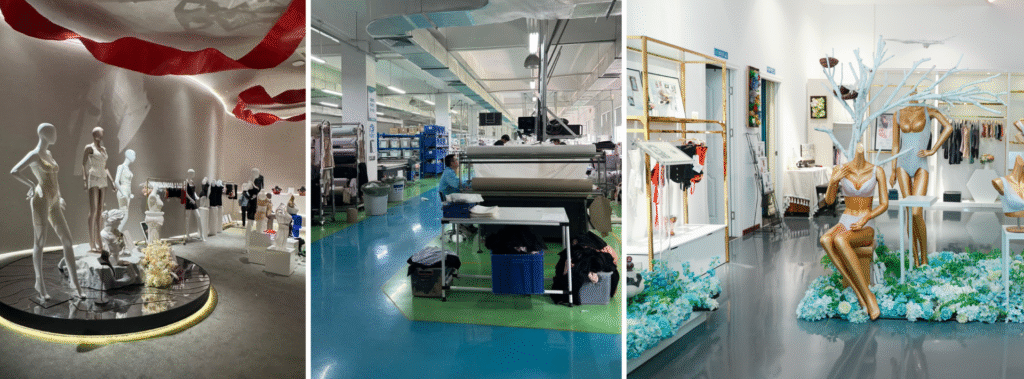
East vs. West Consumer Preferences Today
Asian markets prioritize padded push-up bras, modest coverage, and bright palettes.
Western markets lean toward bralettes, wireless designs, and sustainable lingerie production that values comfort and natural silhouettes.
These differences highlight contrasting lingerie consumer trends Asia vs West—and why brands need tailored strategies for each.
What Are the Key Differences Between Asian and Western Lingerie Markets?
Asian markets prioritize padded push-up bras, modest coverage, and bright palettes, while Western markets lean toward bralettes, wireless designs, and sustainable fabrics. These differences reflect cultural values and consumer expectations. Deepwear lingerie consulting supports fashion brands by adapting lingerie design and sourcing strategies to meet both markets’ demands.
Globalization and Cross-Pollination
The lingerie industry now thrives on cultural exchange. Chinese supermodels like Liu Wen and He Sui elevated East Asian representation on global runways. Luxury collaborations experiment with jade, pearls, and gemstone embroidery, blending couture with Chinese craftsmanship. Western brands increasingly tailor sizing and cuts to Asian body shapes, while Asian designers influence embroidery, fabric use, and silhouette preferences abroad.
This exchange underscores how lingerie has become borderless—an evolving language of identity, sensuality, and innovation shaped by both East and West.
Deepwear can support brands in drawing from these diverse traditions, reinterpreting heritage into lingerie collections that speak to today’s global consumers. Schedule a consultation with us.
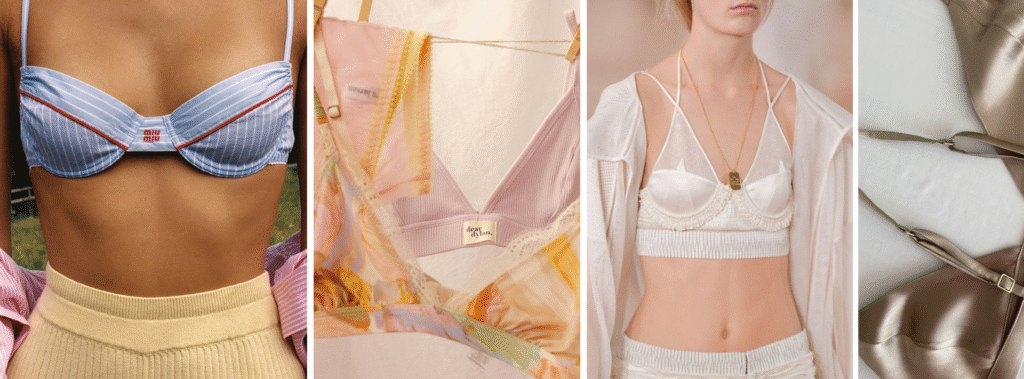
How Can Deepwear Support Brands in Lingerie Production?
Navigating lingerie manufacturing requires balancing cost, creativity, and compliance. At Deepwear, we can:
- Translate design across cultures — adapting Western silhouettes for Asian markets and vice versa.
- Research sourcing options for lace, silk, embroidery, and trims from trusted suppliers.
- Explore different production scales, from low-MOQ sampling for new designers to large factory runs.
- Advise on sustainable choices, such as recycled fibers, biodegradable elastics, or eco-friendly packaging.
With this balanced approach, we can help brands make informed choices and move closer to creating lingerie collections that fit both their vision and their market.
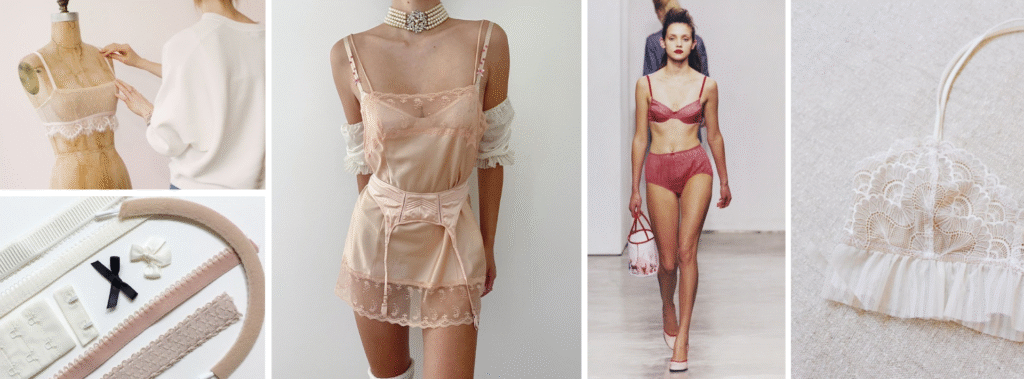
Looking Ahead: A Hybrid Future
The lingerie market is entering a new phase that blends heritage with innovation. While traditions like the Chinese dudou or European lacework still inspire designers, future growth will be shaped by shifting consumer values and technological advances.
Key forces driving this hybrid future include:
- Sizing Inclusivity and Body Positivity: Brands are expanding size ranges and featuring diverse models, challenging narrow beauty standards and making lingerie more accessible.
- Sustainability and Ethical Manufacturing: From organic cotton to recycled lace, consumers expect eco-friendly materials and fair labor practices, even in highly specialized lingerie supply chains.
- Technological Integration: Smart bras, breathable fabrics, and posture-support innovations show how lingerie is evolving beyond aesthetics into wellness and functionality.
- Comfort-Driven Design: Wireless bras, seamless fits, and lounge-inspired silhouettes continue to dominate as comfort becomes a non-negotiable.
- Luxury and Craftsmanship: At the high end, artisanal lingerie with hand-sewn details and rare fabrics remains a niche but growing segment.
- Versatile and Convertible Styles: Adaptive features like removable straps or reversible designs make lingerie more practical for minimalist wardrobes.
- Bold Colors and Expressive Patterns: While neutrals remain popular, vibrant colors and statement prints are reshaping lingerie into a form of self-expression.
Taken together, these trends suggest that the lingerie of tomorrow will not only preserve cultural roots but also embrace inclusivity, sustainability, and technology.
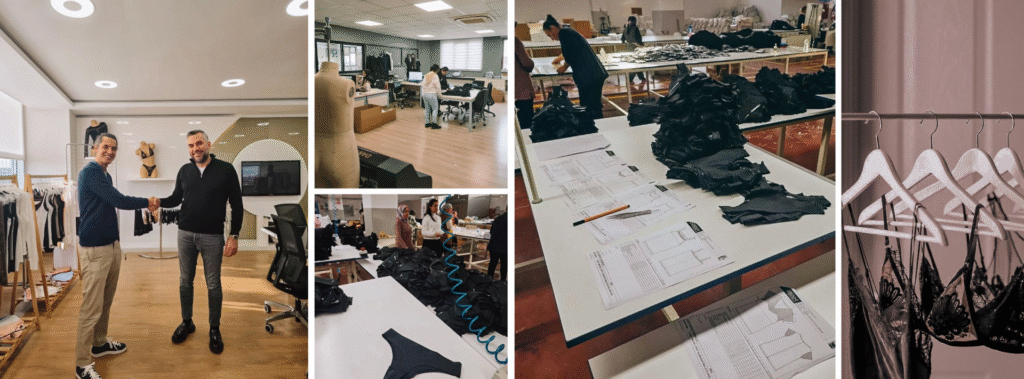
Designing Intimates With Meaning
Lingerie has never been just about fabric and fit—it has always reflected cultural lingerie traditions, heritage, and identity. Whether chosen to be seen or simply to be felt, lingerie allows individuals to embrace comfort, support, and beauty on their own terms.
For brands, this means creating collections that do more than follow trends. Successful lingerie reflects cultural heritage, responds to shifting values, and empowers wearers with both confidence and ease.
At Deepwear, we can support brands in navigating this delicate balance. From sourcing sustainable fabrics to adapting designs across cultures, we can help you explore pathways that honor individuality while aligning with global market demands.
Ready to expand into the global lingerie market? Book a strategy call with Deepwear lingerie consulting experts or explore our cross-cultural lingerie sourcing for fashion brands and production solutions today.